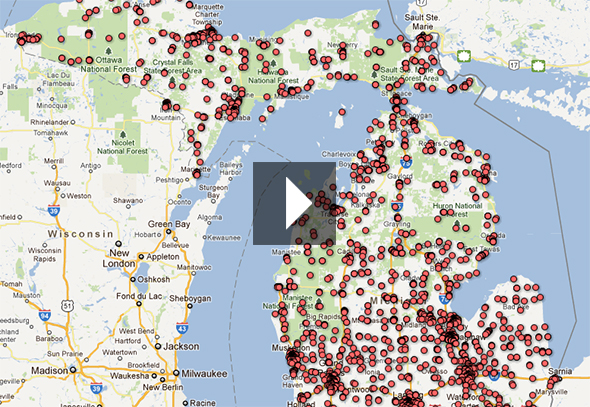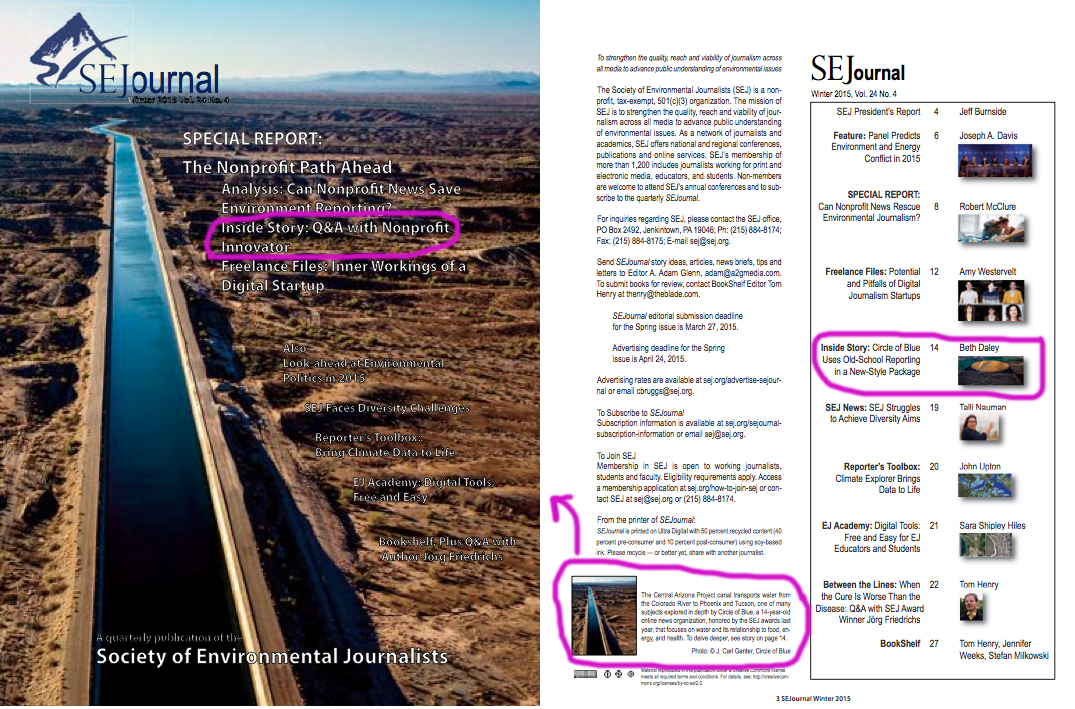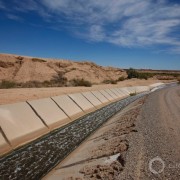New Generation Oil and Gas Lease Ensures Water Protection and Big Money
In Ohio, Circle of Blue’s senior editor finds mineral leases are being negotiated by an attorney representing the landowners.

CALDWELL, Ohio — The day before they received a $US 280,000 check for leasing their oil and gas development rights to Eclipse Energy, Arthur and Sharon Stottsberry stopped in Marietta to remind their attorney that they had almost an acre more to lease. I caught up with the Stottsberrys as they were leaving Jennifer Garrison’s office, as ebullient and keyed up as a retired senior couple from this part of southeastern Ohio is likely to get at this stage.
“Saturday morning we’ll have that check in hand,” said Mrs. Stottsberry. “And then we’ll believe it actually happened. We haven’t planned much about what to do. But when the check comes we’ll plan. The most important thing is I want to make sure my grandkids do well.”

As she described the mix of tempered elation and modest disorientation that comes with a financial windfall, Mr. Stottsberry stood quietly by his wife’s side, clutching the lease agreement that made much of the couple’s new prosperity possible. What’s more, that same agreement also contains enforceable safeguards for their water.
New Negotiations
The 24-page contract — largely designed and negotiated by Garrison — is a manifest of financial and environmental protection details that is pushing the old business of leasing oil and gas drilling rights into new legal and regulatory territory.
Until very recently, most oil and gas leases in Ohio were a few pages long, spelling out standard royalty rates and modest bonus payments per acre of leased minerals, including no protections for water and land. They were most often hammered out by energy companies working one-on-one with mineral owners, many of them unskilled in the back-and-forth of negotiation and unprepared emotionally to press for the best deal.
Over the last year, though, eastern and southeastern Ohio have emerged as a new stage in the shale oil and shale gas production boom that has engulfed at least a dozen other states across the country. America’s deep shales are yielding a bonanza of oil and gas that is rewriting what the United States thought it knew about energy supplies. And it’s prompting a fresh reckoning with the potential hazards of hydrocarbon development, especially water supply and contamination.
–Jennifer Garrison
Attorneys
Ohio’s deep Marcellus and Utica shales are said by state and federal geologists to contain trillions of cubic feet of gas and billions of barrels of oil. The early production logs in Ohio indicate that Utica shale wells are capable of producing hundreds of barrels of oil and millions of cubic feet of gas a day.
The mineral leases that Garrison negotiates with energy companies reflect the high public expectations about financial returns from Ohio’s new energy fields. Her clients are receiving up to $US 5,250 an acre in bonus payments for a five-year lease. They also receive 20 percent royalties on oil and gas production. The lease signed by the Stottsberrys is one of two that Garrison has negotiated on behalf of nearly 300 clients who own 13,000 acres of mineral rights in two southeastern Ohio counties.
Water
Water remains a big part of the shale energy debate:
- Drilling for energy that lies in solid rock about a mile beneath the surface takes millions of gallons of water injected into wells to fracture the formations and release oil and gas.
- Across the Ohio River, in the four-year-old shale gas fields of Pennsylvania and West Virginia, landowners have reported instances of water contamination near wells that have been “hydrofractured.” State regulators and the federal Environmental Protection Agency are investigating the causes.
- New state and federal regulations to protect water and air are starting to take effect in Texas, North Dakota, Pennsylvania, and other states where shale oil and gas production is soaring.
Garrison’s clients — among them the Stottsberrys — heard about the contamination incidents and expressed considerable resolve to prevent such damage on their land. The result is that her leases contain provisions for testing water before and after drilling occurs to make sure none of the chemicals used in the production process have contaminated drinking water. The leases also bar energy companies from drawing water for fracking from any water source on the leaseholders land. If there is a problem with the water, moreover, energy companies are required to address it immediately and provide a fresh water supply to the landowner.
These provisions go well beyond existing Ohio regulations.
“My job is to represent landowners,” Garrison told me. “The mineral lease is the law of the land. We try to help landowners get what they want in their leases. And they wanted to make sure their water was safe.”
Do you live in a shale energy-producing state? Contact Keith Schneider or post in the comments below.
–Keith Schneider
Circle of Blue senior editor
Circle of Blue’s senior editor and chief correspondent based in Traverse City, Michigan. He has reported on the contest for energy, food, and water in the era of climate change from six continents. Contact
Keith Schneider









Leave a Reply
Want to join the discussion?Feel free to contribute!